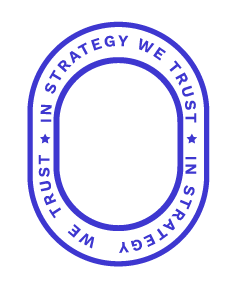Branding
by Molly Mason, Chief Business Officer
At nearly every conference I’ve attended in the past five years there seems to be one pervasive marketing question: How do we reach the Baby Boomers and the Millennials?
Being neither of those demographics, I have often wondered why my generation, Generation X, is always dismissed. After all, we are not that much smaller than the other generations. As of 2017 there were about 65.7 million people in Generation X, as compared to 71.8 million Millennials and 73.4 million Baby Boomers.
We might be a little small in size, but Generation X wields substantial purchasing power. We make 31 percent of the total income earned in the U.S. even though we represent only 25 percent of the total population. According to the U.S. Bureau of Labor Statistics, Generation X outspends every other generation in terms of annual household spending.
And yet, for some reason we are practically ignored by brands. The question is why? We’re a fun people. We’ve almost single handedly made 80’s and 90’s movie references THE best quotes in every situation, television show, and Facebook meme you have ever seen.
We’ve started new industries like craft brewing, protein bars, and CrossFit. Despite being dubbed as the “slacker” generation, we are getting things done in the workplace, leading organizations and communities through both difficult and prosperous times.
My forgotten generation had the privilege and blessing of having the last muddy, hands-on childhood. Our teenage years were filled with nearly extinct technology like tape-eating VCRs, Walkmans, and Mario Bros. video games.
So why have marketers largely overlooked Generation X? I think, in part, it is because they are not sure how to reach us. We are a group of cynical, independent thinkers who are instinctively distrustful of institutions and authority figures.
As latch-key kids growing up in front of the television, we were bombarded by advertising. Now, as adults, we generally turn away as soon as anyone tries to sell to us anything. Just like most of the characters in a John Hughes movie, we act aloof and yet secretly hope that you’ll notice us.
As Rich Cohen said in a Vanity Fair article, Generation X quietly holds the key to sanity, common sense, and irony. “It’s become clear to me that if this nation has any chance of survival, of carrying its traditions deep into the 21st century, it will in no small part depend on members of my generation, Generation X, the last Americans schooled in the old manner, the last Americans that know how to fold a newspaper, take a joke, and listen to a dirty story without losing their minds.”
Generation X is fiercely loyal to our favorite brands – more so than the Baby Boomers or Millennials. With a little creative effort, one of the brands that receives our loyalty and our dollars could be yours.
Branding
Elizabeth Pechaitis, Client Relations Director
I work with clients every day to help them define and build their brand identity. I understand their challenges and struggles, not only because of my marketing expertise, but because it wasn’t too long ago that I went through a personal re-branding process. It was just over a year ago that I made the career transition from teaching professional to marketing professional.
When I tell people that I used to work in the education field as a high school teacher, I get responses ranging from, “Really?!” to “And you live to tell?” People usually ask where I taught and for how long, and why I decided to leave. Although there are many reasons why people leave the teaching profession, like increased class sizes and responsibilities, decreased wages and benefits, or the pressure to keep up with constantly changing state and federal laws and regulations, none of those reasons are why I left. I left because it was time for me to re-brand me.
Understanding My Marketing Capabilities and Passions
Even though we have all spent part of our lives as students, most people don’t understand what teachers really do. Teaching can be an intense, high-pressure job. Teachers are accountable to school administrators, parents, and most importantly, the students. It is a lot of responsibility and a huge amount of work. Teachers must be creative, resourceful and highly-organized. They are expected to display authority in the classroom and show compassion during difficult conversations with both adults and students. It is both extremely challenging and rewarding all at the same time.
When I went to college, I wasn’t planning to become a teacher. I obtained my undergraduate degree in marketing and business administration. After working in sales and advertising for about a year, I decided to go back to school and pursue my teaching certificate in secondary marketing and business education. From there, I went on to earn my master’s degree in education.
I taught a variety of marketing, career development and entrepreneurship classes for middle school and high school students for 14 years. In addition to teaching, I developed and implemented a school-based retail program and initiated a local chapter of DECA. I travelled with the DECA students to national competitions across the country and I even got to experience the excitement and satisfaction of advising a national champion team in 2016.
Exploring My Personal Brand Potential
Although I moved around within the education system, I was comfortable in my role. Or, maybe I should say that I was secure in my brand identity. As a teacher, I devoted a great deal of time and energy to helping my students discover their passions and unlock their true potential. But at some point I realized that I wasn’t doing that for myself. Even though I loved teaching, I wondered if there was something more outside of the four walls of the classroom.
I first connected with Hoyden while teaching marketing and entrepreneurship at the Lenawee Intermediate School District TECH Center. I invited Sarah Stanley to join my program advisory committee to share her industry expertise and offer advice for the development of the program. That connection led to a field trip for my students to visit the Hoyden offices and a group of my DECA students worked with Hoyden on a special project.
Then, Hoyden reached out to me to see if I would be interested in taking on a summer job as a project manager for a marketing campaign for the City of Sterling Heights. Initially, I thought of it as a good opportunity to bring relevant experience to my classroom. Plus, teachers are always looking to make a little extra money during the summer months.
Putting a Spin on My Marketing Expertise
What I thought would be a fun a summer job turned into a serious, life-changing job offer within a few months. While I struggled with the decision, my curiosity and desire to try something new eventually won. Transitioning to a new role in marketing required a re-branding of my experience and expertise. I had to figure out how to translate my years of teaching marketing into real value for Hoyden’s clients.
As it turns out, the world of teaching is not as disconnected from the business world as you might think. The needs of my clients vary, just like the needs of my students. I listen to my clients with the same amount of interest and compassion as I did with my students. And each client requires a customized plan that works for their specific needs and wants – just like my students. As an added bonus, I have a lot more flexibility to take risks and innovate than I did when I was teaching.
Applying Strategy to Personal and Professional Growth
Change can be scary. But it is also exciting and energizing. In my role as Client Relations Director at Hoyden, there is always a new project to dive into. I have the opportunity to learn about different industries and work with a variety of clients, while applying the fundamentals of marketing which serve as the foundation for everything we do. As a teacher, I spent a lot of time in my own classroom. My learning came from reading or workshops. At Hoyden, I learn every day. I am inspired by the collaborative process and being part of a diverse team of people, each with incredible talent and unique skillset. By working together to accomplish collective goals for our clients, I continue to learn and grow from my new experiences and relationships.
This past year has been an exciting journey filled with personal and professional growth. I miss my students and seeing them experience success. But I have no regrets about making a career change. I am being challenged to expand my skillset and apply it in different ways. I didn’t have to start over. I had to re-brand myself. I did it and I love it.
For anyone out there who is thinking about re-branding themselves, and applying your talent to other fields, don’t be afraid to challenge yourself and try something new. Ultimately, I followed my instincts, took a risk, and it led me to a brand-new career!
Branding
 Some people discover their calling at a young age. They instinctively know that they want to be a doctor, or a teacher, or some other profession. I am not one of those people. Finding my voice as a brand and marketing consultant and becoming an entrepreneur has been an unexpected journey.
Some people discover their calling at a young age. They instinctively know that they want to be a doctor, or a teacher, or some other profession. I am not one of those people. Finding my voice as a brand and marketing consultant and becoming an entrepreneur has been an unexpected journey.
I never considered starting my own business as an option for my future in my formative years. I knew very few people who owned businesses and entrepreneurship was always presented to me as something that was not worth the risk. It wasn’t safe.
Even if I wanted to become an entrepreneur, I would have had no idea where to begin.
I grew up among the corn and soybeans in a small town called Morenci, which is on the Michigan side of the border of Ohio. After high school graduation, I studied communications and graphic design at Siena Heights University in Adrian. I enjoyed writing and design, and the program allowed me to focus on both areas of interest. Once I received my degree, I worked as a graphic designer for many years. I loved helping organizations improve their image as I felt that design was great way to help a business set itself apart from its competition.
A few years into marriage, my husband told me that he wanted to start a heating and cooling company. “Why would you want to do that?” I asked. I must have looked at him like he was crazy because I’ve rarely been able to hide what I am thinking.
After a LOT of discussion, we finally took the leap. I was involved in the brand development and marketing for the company, as well as helping to manage the office. I learned a lot about what it takes to run a business and I realized that entrepreneurism wasn’t only a viable path, it was also challenging and fun.
Fast forward 15 years, and that’s when I met my current business partner, Sarah Stanley, through a mutual client. We both felt that we brought a fresh perspective to marketing that would be beneficial to many organizations. We also have complementary skills and personality traits that blend well together.
This time, the decision was easier. I had lived entrepreneurism for 10 years. It wasn’t a big, scary, unknown thing anymore. Now it was an opportunity to build something new. With five dollars in the bank and a twinkle in our eye we started a new venture together called Hoyden Creative. In the five years since, we’ve built a company that has attracted uber-talented people and won its clients’ international marketing awards.
These five years have been some of the most wonderful, frustrating, demanding, and exciting years of my life. As I look back on my journey, learning has been a major catalyst. I have gleaned from the mistakes and success of others as well as from my own bad decisions. Here are a few other things I’ve found learned along the way:
You don’t have to have all the answers. You just need to know who does. A trusted network of advisors, consultants, and vendors is an invaluable asset to an entrepreneur. Learning happens at a rapid rate when you are growing a business, so approach it with a willingness to seek advice.
It’s okay to be afraid of failure. Starting a business involves a certain level of risk. And with any risk-taking venture, there is a chance that you will fail. Even after you launch your business, you may still carry that fear with you. I know that I do. I recently listened to an interview with Steve Madden, founder of a $3 billion shoe brand, who said he still worries that he might go out of business nearly every day.
It’s not what really matters. Our work is important, but it should never come at the expense of important relationships in life. At the end of my life, I’m 100% positive that I will not look back and wish I had spent more time at the office, closed more deals, or made more money. Keeping that in perspective can be hard when your business is growing rapidly, and I haven’t always been successful at this, but it doesn’t change the fact that it’s true.
Entrepreneurship is for those who have the courage to try something scary when the chances of failure are seemingly high. I hope my story encourages the passionate and motivated to find their own path. Maybe it’s starting a business or writing a book. Perhaps it’s raising a family or homeschooling your kids. Whatever your path, be willing to take a risk and you just might accidentally find something amazing.

Branding, Marketing, Public Relations, Strategy

Is it just me, or has the world of marketing been going a little too well over the past few weeks? It seems as though there was a faint ticking sound coming from the marketing campaign time bomb, just waiting to blow.
Since the unfortunate airing of the Kendall Jenner Pepsi commercial or the United Airlines passenger mishap, there really hasn’t been any exciting marketing and PR news. Well, that all changed last week when Bedrock Detroit decided to launch its “See Detroit Like We Do” campaign. I wouldn’t necessarily say I’m pleased that another campaign finally fell through the cracks, but you must agree that it was long overdue.

For those of you who haven’t seen it yet, Bedrock Detroit placed a sign with the slogan “See Detroit Like We Do,” that filled the windows along the ground level of a building in downtown Detroit. That doesn’t sound too bad, right? Wrong. The photograph featured mostly white individuals in a city that is widely known for its diverse culture.
Yikes! Now What?
How companies handle unfortunate situations like the Bedrock Campaign is crucial for their ongoing success. Luckily, Dan Gilbert, founder of Bedrock Detroit and Quicken Loans, was able to address the situation with both speed and grace. “We screwed up badly the graphic package that was partially installed on the retail windows of the first floor of the Vinton Building, in downtown Detroit,” Gilbert said in an open letter posted on Bedrock Detroit’s Facebook page.

“Although not intended to create the kind of feelings it did, the slogan/statement we used on these graphics was tone deaf, in poor taste and does not reflect a single value or philosophy that we stand for at Bedrock Development or in our entire Family of companies,” the letter said. “We have killed the ‘See Detroit Like We Do’ campaign.” It looks like someone payed attention in public relations class! Bravo, Dan.
So, What Did We Learn?
The mistakes that companies make can be very detrimental to both their finances and public image. This is where the PR department must weigh its options; to act or not to act—that is the question.
- Act. And act quickly. When bad news hits you directly, you need to respond immediately.
- Give your organization a face. At this point you’re already dealing with bad publicity, so you want to present your company as one which people can connect with.
- Present the facts. Considering the media driven world we live in, many situations become twisted and can make your situation out to be worse than it is, so act truthfully.
- Be transparent. Allowing people to see how and why things went wrong can help your image in the future.
- Own up to your mistakes. Aside from acting quickly, this might be the most important step. People don’t want to hear the run-around of excuses. Admit your faults and move on.
- Be sincere. Most people can cut through a lot of business talk and empty words. If they can hear sincerity, they are more likely to be forgiving.
While it is somewhat unsettling to see our fellow marketers make these mistakes, it’s an eye-opening experience for anyone involved—particularly the audience. Put yourself in their shoes; see your message through their eyes. You don’t want to be the one to set off that ticking time bomb.
Branding, Communication, Marketing, Strategy
Have you noticed an uptick in messages about self-love and acceptance these days? You know, the messages encouraging you to embrace who you are and what makes you different; to really own it. It’s a nice way of saying quit trying to be someone you’re not! In marketing, as we continue to work on personifying brands, it’s not a stretch to carry over that mentality.
Are you owning your brand or struggling in the identity department? Let’s do a little self-diagnosis.
Here are three signs you have a brand identity problem:
Your answer to “What do you stand for?” changes depending on who is asking.
You make marketing decisions based on what’s trendy rather than brand strategy.
You have a lukewarm relationship with your target audience.
If any of these questions strike a chord, it’s time to go back to basics with your brand. It’s not an insult or a sign of weakness; major brands regularly revisit their strategy to evaluate and adjust for maximum effect. This will get you back on track and ahead of those who are too proud to admit they have a problem.
There are many more elements to building up a wow factor, but these are the ingredients for a strong foundation.
Brands, like people, grow and develop over time. They need constant assessment to understand what they stand for over the years or else they will become outdated and unrelatable.
- Be sure of your values and target audience, and be mindful of just how those two things overlap.
- Understand the needs of your audience and how they wish to be reached.
- Present yourself consistently in terms of messaging and frequency.
Make your Marque
What happens when you get to the point where you own your brand? You aren’t hiding behind anything and you aren’t trying to imitate others. You are no longer worried about pleasing every person on the planet, because you know that is just not going to happen. (Really, it’s not.) Instead, you know that by owning your brand, you’ll attract people that value what you value.
Branding, Communication, Public Relations

Imagine that you’re taking your child to their first driving lesson, and out of nowhere, a car cuts you off and the driver is yelling at you. A few moments later, you pull up to the driving school to see the same person is now your child’s driving instructor. More than likely, you would take your child somewhere else. I’m not saying that you have to be a robot, but it’s important to be aware of your actions. Whether you’re on the clock or not, being a positive advocate for your brand is important.
React Wisely
I’m no wizard. Therefore, I can’t control when unexpected things happen to me. But, I can control the way I react to them. Showing self-control on tough situations tells people a lot about your character, which reflects positively on your brand.
Don’t be average
Demonstrate that your brand is unique. While attending networking events, make it a point to engage with everyone in the room, not just key people. Go above and beyond the norm. Learn about their interests and goals, so that you can offer support or advice. This builds trust, an important factor in business decisions.
When people trust you, your brand will speak for itself.
If you can successfully reach out and influence others positively, they will never forget about you.

 Some people discover their calling at a young age. They instinctively know that they want to be a doctor, or a teacher, or some other profession. I am not one of those people. Finding my voice as a brand and marketing consultant and becoming an entrepreneur has been an unexpected journey.
Some people discover their calling at a young age. They instinctively know that they want to be a doctor, or a teacher, or some other profession. I am not one of those people. Finding my voice as a brand and marketing consultant and becoming an entrepreneur has been an unexpected journey.




